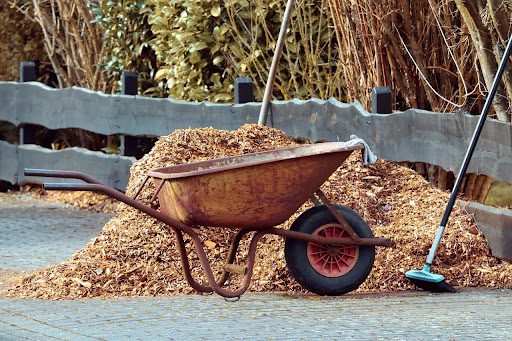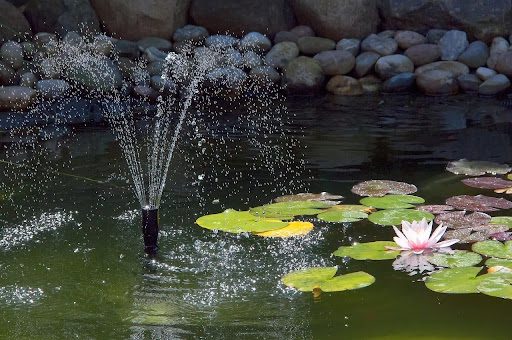Tips for Sustainable Landscaping
Bird and insect populations have been in steep decline for the last few decades. The loss of native insect pollinators is of particular environmental concern. Homeowners can make a difference in their local area by engaging in sustainable landscaping practices that support the local ecosystem. This comprehensive guide provides tips on how to transform your yard into an environmentally beneficial and sustainable landscape.
What is sustainable landscaping?
A sustainable landscape is defined as a landscape that requires minimal input of outside materials and labor. Many people are surprised to learn that an environmentally beneficial, sustainable landscape is also a low-maintenance and low-cost landscape. Once designed and constructed, your sustainable landscape will maintain itself with minimal input of water, fertilizers, pesticides, and building materials. The days of endless weeding, mowing, raking, watering, and trimming tasks will become a thing of the past. Simultaneously, your yard will become a carbon sink and a safe haven for birds, bees, and wildlife.
Minimize lawns
For many decades, a vast swath of neatly trimmed grass has been the defining feature of the suburbs. People took pride in their lawns and worked hard to produce the desired "putting green" look. However, it has gradually become apparent that lawns are quite environmentally damaging. They provide no habitat or food for any organisms and they require a lot of water, pesticides, herbicides, and gasoline-powered machinery to maintain.
Reducing, minimizing, and/or replacing your lawn is a key component of sustainable landscaping. Lawns should be reserved for uses that involve a lot of foot traffic. No other plant can withstand foot traffic the way grass can. However, if you want to completely eliminate mowing from your life, hardscaping areas that take a lot of foot traffic is a viable alternative.
Pest control
Indiscriminately applying pesticides and herbicides on yards is a major reason why insect and bird populations are crashing. Most of these chemical agents are not targeted and in addition to killing the unwanted grasshoppers and aphids, they also kill hundreds of other species, decimating the ecosystem in your yard. Without insects to feed on, many bird species will starve to death. Most pesticides also kill bees, which are a vital component of all ecosystems.
Alternatives to indiscriminate pesticides do not include other indiscriminate insect killers, such as diatomaceous earth. Just like a pesticide, these agents kill every insect species they encounter, including bees. Providing habitat for birds and ladybugs in your sustainable yard is one eco-friendly way to control insect populations. Planting native plants, which are usually resistant to native insects, is another great approach. The use of plants that naturally repel insect pests, such as alliums, is a tried-and-true method. If necessary, spraying soap solutions directly on pests can destroy them without affecting wanted insects, such as ladybugs and bees.
Although herbicides don't directly kill insects or birds, they still cause great harm to these organisms. Most herbicides are used to kill weeds in lawns in order to generate a grass monocrop, which provides no food or habitat for most species of insects and birds. If there are no flowers, there are no bees, and flowers turn into seeds to feed birds.
Alternatives to herbicides include manually digging up unwanted weeds and accepting weeds as beneficial plants. Lawns that are full of clover, dandelions, and native flowering plants provide food for bees and native pollinators, and clover fixes nitrogen, which improves the health of the lawn.
Mulch and weed barriers are both excellent and eco-friendly ways to prevent unwanted plants from sprouting. Reducing artificial fertilizer use and irrigation can also suppress weeds. Many of the more common types of invasive plants have become adapted to invading nutrient-rich, wet environments, such as a typical lawn, and providing more natural conditions prevents them from getting established. Native plants can also choke out and out-compete invasive weeds under more natural cultivation conditions.
Fertilizer substitutes
Artificial fertilizers are expensive and environmentally damaging. A key feature of a sustainable landscape is that no artificial fertilizer is required. Composting is the key to independence from a constant supply of outside fertilizers. Composting kitchen scraps and yard waste is easy and there are dozens of different ways to compost, from the basic "heap on the ground" to tumblers to super-fancy worm farms.
The most important thing to keep in mind when composting is to maintain the correct two-to-one (by volume) ratio of browns to greens. Many people fail to produce good compost because they just put kitchen scraps (greens) into the compost, and they rot instead of composting.
Yard waste is the perfect source of browns for composting. Dedicated composters are mystified by people who collect fallen leaves, twigs, and grass clippings and then put them in the garbage can. What a waste. Leaves, grass clippings, and other organic yard debris should be allowed to air dry before being added to the compost. Shredding yard waste will allow it to compost faster.
When applying compost to your yard, simply sprinkle it over the ground. Many studies have shown that disturbing the ground by digging releases greenhouse gasses and disrupts the beneficial communities of bacteria and fungi that live in the soil. A no-till approach is ideal for a sustainable landscape.
If your trees produce a lot of leaves every year, in addition to putting some in the compost, you can make eco-friendly mulch out of the rest. Fallen leaves can be shredded and directly deposited anywhere you need mulch. Fallen branches and twigs can similarly be run through a wood chipper and used as mulch.
Water control
A sustainable landscape should be able to exist with minimal irrigation. The careful selection of native plants that thrive in the local environment is one way to minimize irrigation needs. Other approaches involve maximizing your use of local rainfall.
Permeable hardscaping should be a feature of your yard. The parts of your yard that are paved with slabs of concrete or asphalt are just wasting water. Any rain that falls on concrete just runs off and is lost. Replacing concrete with gravel or some other permeable hard surface, such as interlocking pavers with gaps for water to run through, allows your yard to absorb all of the water that falls on it.
Another way to collect water is to use the water that falls on your house's roof. The rain gutters can be directly connected to a drip irrigation system to spread the water away from your house and into your garden. Alternatively, you can install rain barrels to your rain gutters to collect and store precipitation for later use.
You could also consider constructing a rain garden, sometimes also called a bioswale. A rain garden uses slopes and berms to direct how rainfall flows through the landscape. The rain garden may include a water feature, such as a pond or creek, that is naturally filled by rainfall. Water-thirsty plants are then placed in areas where they will get a lot of the redirected rain run-off. A rain garden will help maximize your use of local water resources.
Erosion control
Erosion can affect any part of a yard. Water, wind, foot traffic, and vehicles are all major causes of erosion. Hillsides, sloping areas, and drop-offs tend to be more severely affected by erosion from water. Erosion control is a vital part of a sustainable landscape. You don't want your valuable soil to wash or blow away.
There are many approaches to erosion control, such as planting vegetation; covering the soil with gravel, mulch, or geotextile blankets; and building retaining structures, such as berms, walls, and dikes.
A gabion is a wire mesh cage that is filled with loose rocks. They can be used in place of retaining walls along drop-offs and hills and as barriers alongside ditches, creeks, and ponds. Water can flow through the wires and rocks, but it is slowed and diverted while doing so. More importantly, soil and sediment carried by the water cannot pass through the rock fill. These features make gabions better at stabilizing soil than a solid retaining wall. A solid wall just holds water back, and when the water reaches a sufficient volume, it will overflow over the top of the wall, carrying the soil with it.
Gabions are cheaply and easily constructed from local materials that can be gathered and placed inside the wire basket. They have a minimal carbon footprint because only the lightweight wire basket, which is usually made out of steel, needs to be manufactured and transported. They are also durable and long-lasting, require little to no maintenance, and can enhance the aesthetics of a landscape.
Go native
Most of the plants sold at gardening centers around the country are exotic species. Even well-known plants like tulips and daffodils are not native to the US. A yard populated with exotic species is unlikely to be very friendly to local insects, birds, and wildlife. Seeking out native plants and replacing exotics is a fundamental part of developing a truly eco-friendly and sustainable landscape.
Microclimates
A sustainable ecosystem has many different microclimates within a small area, allowing a wide range of organisms to grow and thrive. A standard non-sustainable landscape, with a monocrop of unshaded grass and a few flower beds, provides very few niches for organisms to inhabit.
An easy way to create many different microclimates in your yard is to plant mixtures of different types of plants together. For example, instead of a monocrop of grass, grow a mixture of low-growing flowering plants and other types of ground covers. Try filling flower beds with mixed plantings of shrubbery and assorted flowers instead of a mass planting of tulips. Instead of focusing on sun-loving gardens, plant some trees in one corner and deliberately create a shade garden. Diversity is key to creating a sustainable environment.
Ecosystem support
In addition to packing as many native plants and pollinator-friendly plants into your yard as possible, consider letting some of your yard "go wild." Some people call this a wildlife garden, the bee/bird zone, or "the rough." Essentially, it's a piece of your yard that you just leave alone. It should be planted with a good selection of native plants of various types and perhaps incorporate a small water feature to provide drinking water to birds, butterflies, and wildlife. Think of it as a private green space preserve. The trick is to leave it alone as much as possible so it can do its thing and support the local ecosystem.
Temperature control
Sustainable landscaping can also be used to reduce the heating and cooling needs of your home. For example, planting deciduous trees along the south, east, and west sides of a house and evergreen trees along the north side can make a major difference in the house's interior temperature. During the summer, the deciduous trees will be in full leaf and will block sunlight from heating the home. In the winter, they will lose their leaves, allowing sunlight to warm the home. In the meantime, the evergreen trees will block chilly winds in the winter and provide some cooling shade in the summer.
In summary
You don't have to apply all of these tips to make a difference. Even something as simple as not raking up leaves, cutting back on pesticide use, or replacing an exotic plant with a native plant are valuable steps that can help support the local ecosystem.



